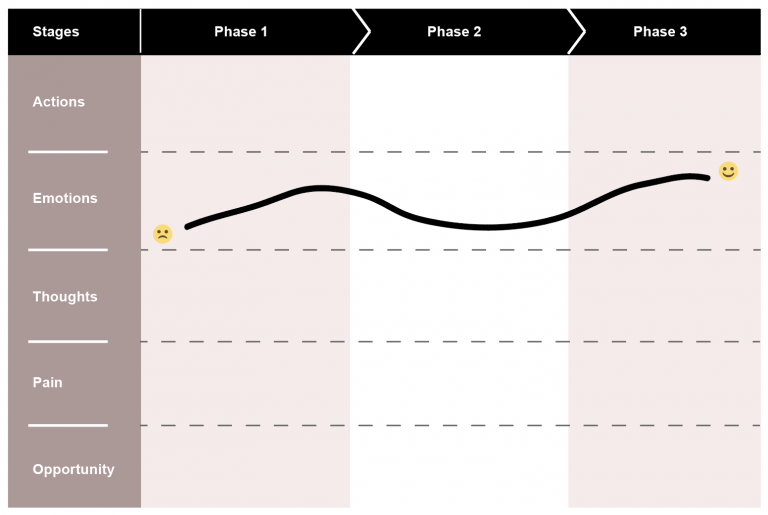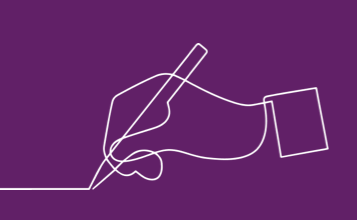What is (and isn’t) a customer journey map?
A customer journey map, also known as a user journey map, is a visualisation of an individual’s experience with a product, service or organisation. Their purpose is to tell a user experience story by plotting a user’s thoughts and feelings over a specific period of time.
Customer journey maps have similarities with other outputs such as empathy maps, experience maps and service blueprints. However, what sets customer journey maps apart are their focus on the experience of a specific user or user group in a specific scenario. They are created from the point of view of the customer, rather than the business.
The beauty of customer journey maps is that they are extremely flexible. They can be adapted in many different ways to capture the information that is most pertinent to the product, or project, at hand. In their simplest form, customer journey maps include: an actor (usually a persona), a timeline and the actor’s thoughts and feelings.

Other information you might expect to find on a customer journey map include: the customer’s goals, expectations, pain points, channels (e.g. email, app), touchpoints and opportunities for the business. A quick Google search of “customer journey map” will reveal many different variations that you can draw inspiration from.
Why are customer journey maps useful?
There are many reasons you may want to create a customer journey map. In fact, you will likely want to create several to capture different personas and different experiences. Some purposes for creating customer journey maps include:
- Identifying opportunities
By identifying pain points in the user experience, businesses can focus their attention on these areas, turning negative experiences into positives. - Exposing knowledge gaps
As the old adage goes: “You don’t know what you don’t know”. Identifying gaps in knowledge can shed light on the areas where further market or user research may be required to better understand your customers. - Developing empathy
It can be an excellent workshop activity to invite stakeholders to take part in the creation of customer journey maps. By doing so, individuals within a business are forced to view activities from the perspective of the user. - Storytelling
Customer journey maps are both concise and visual, which makes them handy for presentations and for creating a shared understanding within organisations. - Envisioning the future
Though customer journey maps often reflect existing journeys, they can also be created to visualise future or imagined journeys. Used in this way, they are not only research outputs, but design tools.
How do you create a customer journey map?
Okay, so you want to create a customer journey map. How do you actually go about doing it?
- Choose your actor
As mentioned above, your actor will usually be a persona. If you don’t already have personas, you’ll want to do some research with your users or customers to create them. - Define your timeline
What is your start point? What is your end point? And what are the phases that fall in between? - Pick your swim lanes
Decide what swim lanes you want to include on your customer journey map. This should be driven by both your objectives and the data that you have available. - Plot your data: Now that you have your customer journey template set up, it’s time to populate it. But, before you get too excited, it’s worth noting that your data should come from research insights or business knowledge, rather than your imagination.
Want to learn more about customer journey mapping?
Bunnyfoot are now offering a course dedicated to ‘Customer journey mapping, modelling and information architecture‘. If you would also like to learn more about the user research which goes into developing a customer journey map, we also run a course ‘Customer/user research methods‘.
Alternatively, we work with our clients to develop these on a daily basis, so get in touch if you would like to discuss how we can support you.





